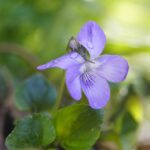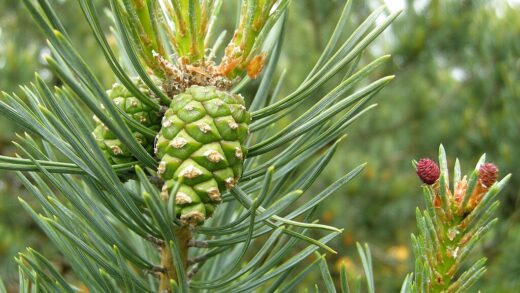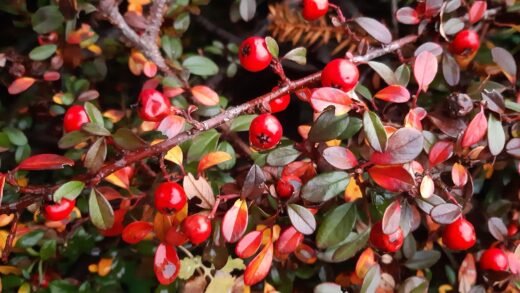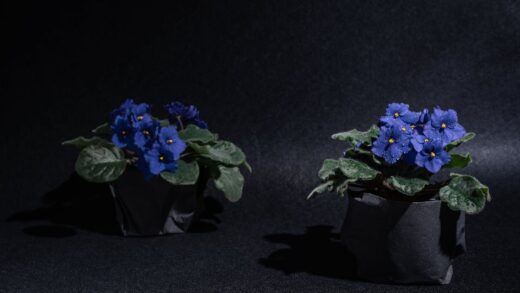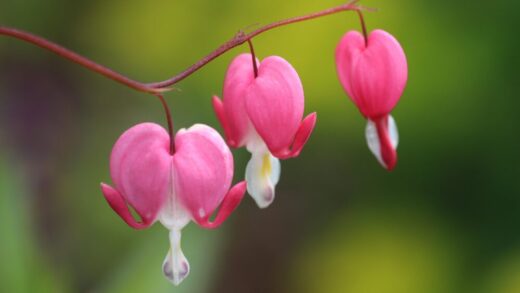Lavender, as a characteristic plant of Mediterranean landscapes, essentially loves sunlight and it is indispensable for its proper development. This plant shows its most beautiful and most intense flowering when it receives at least six to eight hours of direct sunlight daily. The reason for this lies in the efficiency of the photosynthesis process, which, with the help of the sun’s energy, produces the nutrients necessary for the plant. Abundant sunshine also stimulates the accumulation of essential oil content in the flowers, which is a characteristic and valuable property of lavender. A lack of light, on the other hand, results in weaker growth, sparser flowering and paler colors, which significantly reduces the plant’s aesthetic and economic value.
The relationship between light intensity and flowering
The quality and quantity of lavender flowering is directly related to the light intensity the plant receives. In sunny, south-facing areas, plants produce much more abundant flowers and a more vibrant purple color than in shadier areas. This is because the synthesis of flower pigments (anthocyanins) is enhanced by the effect of sunlight, which results in deeper and fuller colors. In addition, adequate lighting can also prolong the flowering period, so we can enjoy the beauty and scent of lavender for a longer time. The absence or weakness of flowering can often indicate that the plant is not getting enough sunlight, and this problem may require immediate intervention.
Placement of lavender and sun exposure
For the optimal development of lavender, it is essential to choose the right place. When planting it in a garden, it is worth looking for an area where the plant can receive direct sunlight all day, and there are no trees or buildings nearby casting shadows. If you grow it in a pot, make sure that the pot can be moved and place it in the sunniest spot during the sunny hours. Morning and late afternoon sunlight is particularly beneficial, as it is not as intense as during the midday hours and helps the plant to perform photosynthesis more efficiently. After the frosts have passed, it is worth gradually acclimating the seedlings to the outdoor conditions, thus avoiding scorching and stress.
More articles on this topic
Light deficiency and the plant’s reaction
The lavender’s reaction to a lack of light is clear and has characteristic symptoms. Due to the low light intensity, the plant elongates, the shoots become thin and weak, as the plant tries to grow towards the light. The distance between the leaves increases, and they can take on a pale, yellowish color, which indicates a decrease in chlorophyll production. Flowering is absent or weak, the buds do not develop properly, and the scent is also less intense. Lavender that lives in a state of light deficiency for a long time is also more prone to diseases and pests, as its immune system is weaker, so the plant’s lifespan can also be significantly reduced.
The quality of light and the development of lavender
For lavender, not only the quantity of sunlight but also its quality is of crucial importance. The spectrum of sunlight consists of rays of different wavelengths, of which red and blue light are of outstanding importance for plants. Blue light is responsible for vegetative growth, the development of the stem and leaves, while red light stimulates flowering and fruit production. Natural sunlight contains these spectra in an ideal ratio, which is why lavender feels best outdoors. Artificial lighting, for example during indoor cultivation, can only be effective if the light source provides the full spectrum for the plant.
The relationship between light and temperature
More articles on this topic
Light and temperature are in close interaction during the development of lavender. During sunny hours, the leaves of the plant warm up, which accelerates photosynthesis and metabolic processes. The optimal temperature range for lavender is usually between 20-25 degrees Celsius, but the plant also tolerates warmer periods, provided it has an adequate water supply. However, long-term, extreme heat and direct sunlight combined with a lack of water can cause stress, which can lead to scorching of the leaves. Ensuring the right light conditions and a moderate temperature is key to the healthy growth of the plant and the development of the intense essential oil content of the flowers.
Shady environment and lavender
Although lavender loves sunlight, it can survive in a shadier environment, but the quality of the plant deteriorates significantly. Lavender grown in the shade is more prone to fungal diseases, as the leaves and soil dry more slowly, which favors the proliferation of pathogens. Due to less sunlight, the number and size of the flowers also decrease, and their scent becomes less characteristic. If only shadier areas are available in the garden, it is worth considering planting other shade-tolerant plants or relocating the lavender to a sunnier spot. In shady conditions, growing lavender requires continuous attention and special care.
Optimizing light conditions
Ensuring ideal light conditions for lavender is the cornerstone of successful cultivation. In addition to choosing the right location, the optimal distance between plants is also crucial so that they do not shade each other. Pruning also contributes to better light supply, as it removes unnecessary shoots and allows sunlight to penetrate the inside of the plant. Regular weeding is also important, because weeds compete with plants for light and nutrients. With these simple but effective methods, we can ensure that our lavender develops in the best possible conditions and blooms abundantly.
Light and the essential oil content of lavender
The value of lavender is primarily given by the essential oils found in its flowers, the quantity and quality of which are closely related to the amount of sunlight the plant receives. Abundant sunshine stimulates the biosynthetic processes taking place in the glandular hairs, i.e., the plant’s essential oil-producing structures. Sunlight serves as a source of energy for the synthesis of terpenoids, such as linalool and linalyl acetate, which are responsible for the characteristic scent of lavender. As a result, lavender grown in sunny, dry areas has a much higher essential oil content than its counterparts grown in shadier or wetter environments. A high essential oil content is of particular importance for medicinal, cosmetic and food industry applications.
Light intensity and the quality of the scent
The quality of the lavender’s scent depends not only on the amount of essential oil but also on the ratio of different chemical compounds. The intensity of sunlight influences the formation and ratio of these compounds, which directly affects the scent profile. The scent of lavenders growing in sunny, Mediterranean climates is much more complex and richer than that of those grown in less sunny areas. Strong sunlight causes the plant to produce more monoterpenes and sesquiterpenes, which result in deeper and more lasting scent notes. Light deficiency, on the other hand, causes a weaker scent and an imbalanced compound composition, which reduces the usability of the lavender.
The effect of sunlight on pest control
For lavender, sunlight is not only important for growth and flowering, but also plays a role in strengthening the plant’s natural defense mechanisms. As a result of abundant sunshine and adequate light intensity, the plant develops stronger stems and foliage, which makes it more resistant to physical damage and pest attacks. The compounds found in essential oils, such as camphor and eucalyptol, have insect repellent effects, and the concentration of these compounds increases under the influence of sunlight. Weak, shady plants are much more vulnerable and more likely to fall victim to aphids, spider mites and other pests.
Light and resistance to diseases
The light requirement of lavender is also closely related to its resistance to diseases. The leaves and soil of plants in a sunny location also dry faster, which reduces the risk of fungal infections, such as powdery mildew and gray mold. Adequate light conditions contribute to improving the plant’s general health, which results in a stronger immune system. Lavender kept in a weak, shady environment is more prone to root rot and attacks by other moisture-loving pathogens. The healthy and vital state of the plant can only be achieved by ensuring proper light conditions.
Growing lavender in different light conditions
Growing lavender in different geographical and climatic conditions can present challenges, especially with regard to differences in light conditions. The plant of Mediterranean origin prefers hot, dry and sunny areas, where the summer days are long and the light intensity is high. In such climates, lavender blooms abundantly with minimal care. However, in cooler, northern climates, where summers are shorter and the number of sunny hours is less, ensuring proper light conditions requires more attention. In this case, growers must choose varieties that are better adapted to less sunlight and ensure the optimal placement of the plants.
The light requirement of potted lavender
In the case of potted lavender, meeting the light requirement offers more flexible solutions. Plants in pots can be easily moved, so they can be placed in the sunniest spot during sunny periods, for example, on a terrace, balcony or windowsill. During the colder, cloudy months, the lavender can be brought into a sunny, frost-free room, such as a heated winter garden or a bright garage. The size of the pot also plays an important role; in a larger pot, the roots have more room to develop, which contributes to the plant’s overall vitality. Growing in a pot allows the lavender’s light requirement to be adjusted to the circumstances, and the plant to remain healthy all year round.
The role of artificial lighting
During indoor lavender cultivation, where natural sunlight is not sufficient, artificial lighting plays a key role. Plant lights (grow lights) provide a wide spectrum that mimics sunlight and contains all the important wavelengths for photosynthesis. It is important that the lamps are equipped with a timer and shine for 10-12 hours a day, thus imitating the plant’s natural light cycle. The distance of the lamps from the plant is also critical, as a light source placed too close can burn the leaves, and one placed too far away does not provide enough intensity. The professional use of artificial lighting makes it possible to successfully grow lavender in less sunny homes.
Shade-tolerant lavender varieties
Although lavender is basically a sun-loving plant, there are varieties and hybrids that tolerate shadier conditions a little better. These varieties generally produce less essential oil and their flowering is not as abundant as that of their counterparts grown in a fully sunny location. These types of lavenders may be suitable for gardens where the sunlight is not all day, but only reaches the area for a few hours. However, it is important to note that even these varieties require at least 4-5 hours of direct sunlight for proper growth and flowering. Variety selection is therefore crucial if the environmental conditions are not ideal for lavender.










